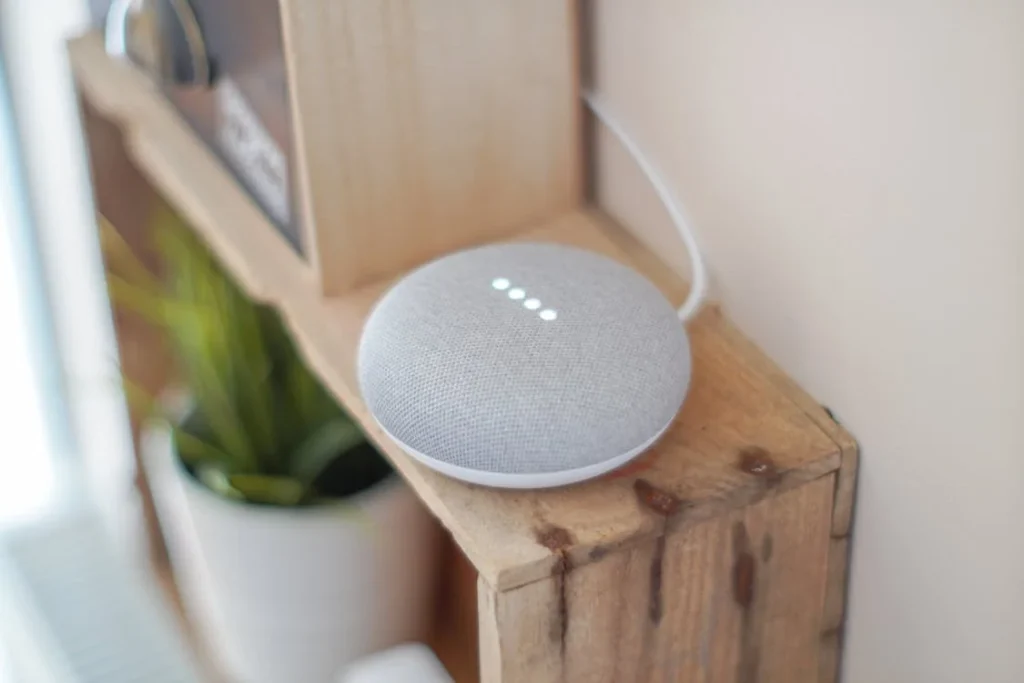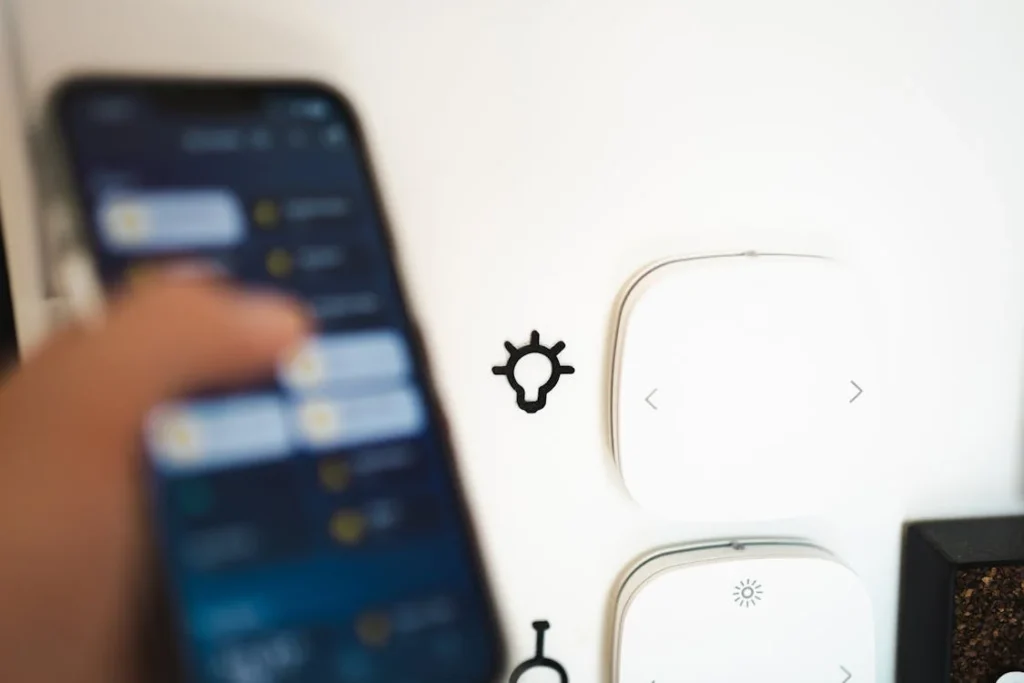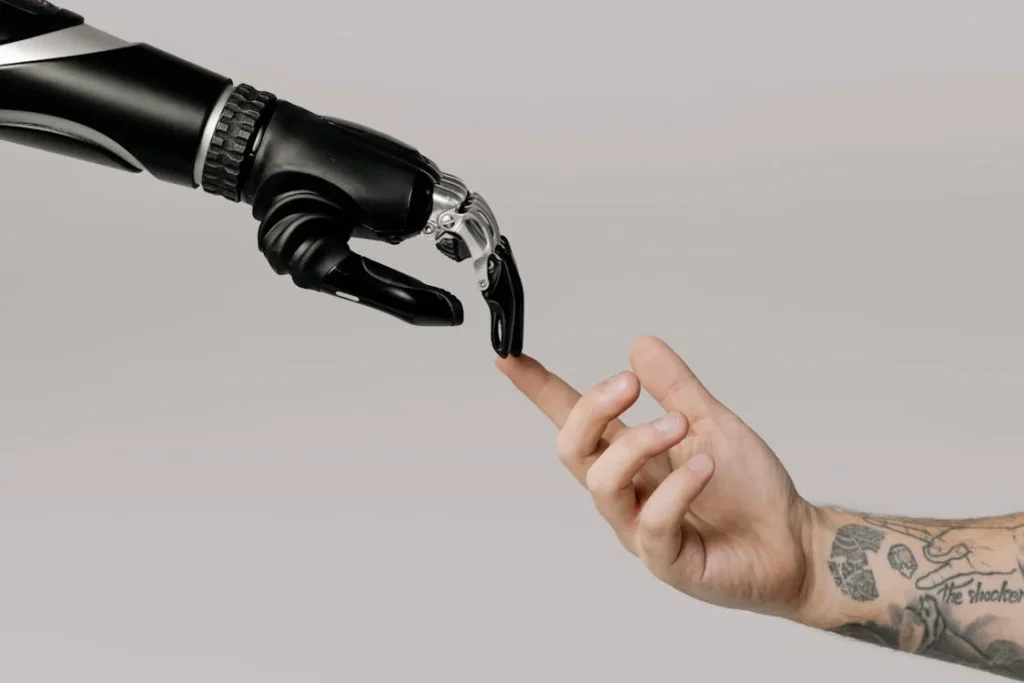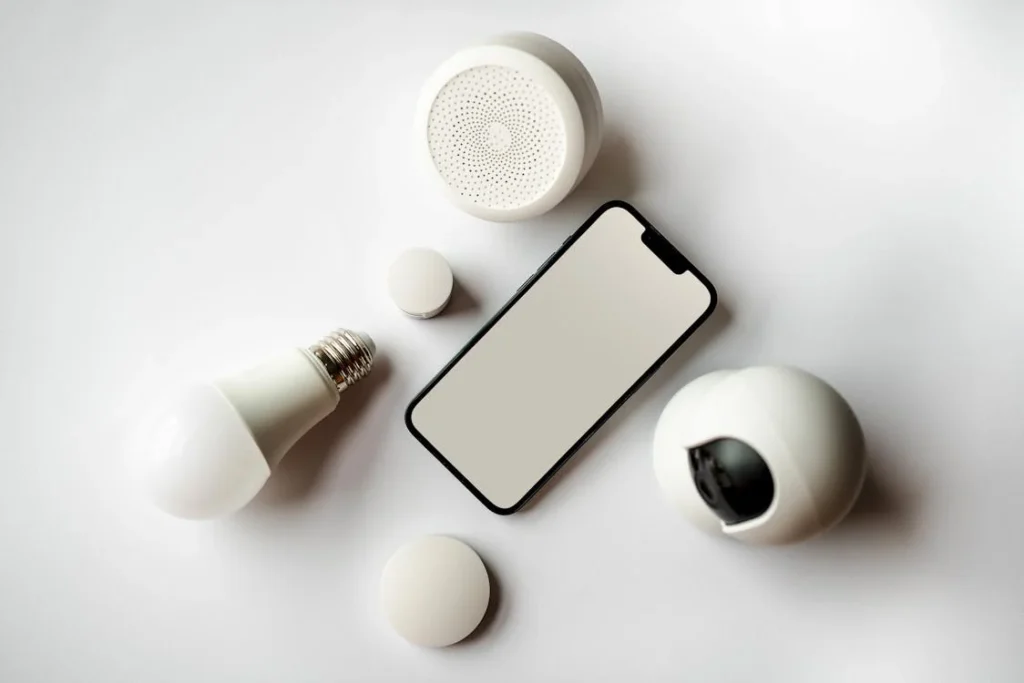Technology is changing lives in ways we never imagined. For people with disabilities, artificial intelligence (AI) and voice assistants are making the world more accessible than ever before. Tasks that were once difficult or impossible—like sending messages, controlling devices, or even navigating public spaces—can now be done with just a voice command.
AI is helping people with visual impairments, mobility challenges, and cognitive disabilities live more independently. Voice assistants like Alexa, Siri, and Google Assistant are removing barriers, making everyday life easier, and creating a more inclusive world. These advancements are not just futuristic ideas; they are happening right now, and their impact is growing every day.

AI and Voice Assistants: A Game Changer for Accessibility
AI-powered voice assistants are becoming essential tools for people with disabilities, helping them perform tasks that were once difficult or impossible without assistance.
From controlling smart home devices to accessing information hands-free, these technologies are empowering millions.
Making Everyday Tasks Easier
For someone with limited mobility, even simple tasks like turning on a light, adjusting the thermostat, or answering the door can be a challenge.
Voice assistants remove these barriers by allowing users to control their environment with just their voice. A person can say, “Alexa, turn on the living room lights,” or “Hey Google, set the temperature to 22 degrees,” and the action happens instantly.
Smart homes, equipped with AI-powered devices, are changing how people with disabilities interact with their surroundings.
Doors can be unlocked, appliances can be controlled, and even entertainment systems can be operated without needing to touch a single button. This level of control brings independence and convenience, reducing the need for constant physical assistance.
Helping People with Visual Impairments
For individuals who are blind or have low vision, AI is acting as an extra set of eyes. Voice assistants can read out messages, describe objects, and even recognize faces.
Features like Google Assistant’s screen reader or Apple’s VoiceOver enable users to navigate their phones and computers with ease.
Smartphones and AI-powered apps can now read text from books, labels, and signs aloud, helping visually impaired users understand their surroundings.
AI-powered cameras can even describe what’s in front of them, helping people recognize objects, identify currency, and read handwritten notes.
Enabling Better Communication
Voice assistants are also transforming how people with speech and hearing disabilities communicate. AI-powered speech-to-text software helps those who are deaf or hard of hearing understand conversations in real-time.
Google’s Live Transcribe, for example, converts spoken words into text instantly, making interactions more seamless.
For individuals with speech impairments, AI-based voice synthesis tools allow them to communicate using customized digital voices. Some advanced AI systems even learn a person’s unique speech patterns, improving accuracy and allowing more natural communication.
Supporting Cognitive Disabilities
People with cognitive disabilities, such as autism or dementia, can benefit greatly from AI-powered tools. Voice assistants can provide reminders for medication, appointments, or daily routines, helping users stay organized and independent.
These assistants can also provide step-by-step guidance for tasks, making complex activities easier to manage.
For individuals with autism, AI-powered conversation tools help improve communication skills. Some voice assistants are programmed to recognize patterns in speech and provide responses that support social interactions.
AI can also offer calming music, guided meditation, or interactive storytelling to help manage stress and anxiety.
Breaking Barriers in Education and Employment
AI is also making education and employment more inclusive. Students with disabilities can use voice assistants to take notes, research topics, and access digital books without needing to type or write.
AI-powered learning platforms offer personalized experiences, adapting to different learning styles and needs.
In the workplace, AI tools help employees with disabilities perform their jobs more effectively. Voice commands allow workers to control their computers, compose emails, and schedule meetings hands-free.
Companies are increasingly adopting AI-driven accessibility tools to create more inclusive work environments, ensuring that employees of all abilities can contribute to their fullest potential.
AI and voice assistants are not just conveniences; they are life-changing technologies that are transforming accessibility on a global scale. Their impact is already significant, but as AI continues to evolve, the possibilities for creating a more inclusive world are endless.

AI-Powered Accessibility in Healthcare
Healthcare is one of the most critical areas where AI and voice assistants are making a difference. For people with disabilities, accessing medical services can often be challenging, but AI is helping to bridge the gap.
Virtual Health Assistants for Medical Support
AI-powered voice assistants are now capable of reminding users to take medication, schedule doctor appointments, and even monitor vital health signs.
For someone with limited mobility or memory challenges, these reminders can be life-saving. Instead of relying on written notes or human caregivers, a person can simply ask their voice assistant, “When do I need to take my next dose of medication?” or “What’s my next doctor’s appointment?” and get an instant response.
Virtual health assistants are also improving doctor-patient communication. AI chatbots can provide immediate medical advice based on symptoms, reducing the need for unnecessary hospital visits.
For individuals with disabilities who struggle with transportation, this technology can be a game changer. AI-based telehealth platforms allow patients to consult doctors remotely, ensuring they receive medical care without leaving their homes.
Improving Accessibility in Hospitals
Hospitals and clinics are integrating AI-driven systems to assist patients with disabilities.
Smart kiosks with voice-activated features help people check in for appointments, access their medical records, and receive important health information without needing physical assistance.
For individuals with hearing impairments, AI-powered captioning services enable real-time transcription of doctor-patient conversations. This ensures that every patient, regardless of their disability, can fully understand their diagnosis and treatment plan.
Some AI applications even provide sign language translation, making healthcare services more inclusive.
AI in Mental Health Support
Mental health is another area where AI is having a profound impact. People with disabilities often experience higher levels of stress, anxiety, and depression due to accessibility challenges.
AI-driven mental health apps offer 24/7 support, providing guided meditation, relaxation techniques, and emotional support through voice interactions.
Voice assistants can also detect changes in speech patterns and tone, which can indicate emotional distress. Some AI systems analyze a user’s voice and offer personalized recommendations, such as calming exercises or connections to mental health professionals.
These innovations are making mental health support more accessible and reducing the stigma around seeking help.

Enhancing Mobility and Navigation
For people with mobility impairments, navigating public spaces can be difficult. AI is transforming mobility solutions, making transportation and navigation more accessible than ever before.
AI-Driven Smart Wheelchairs
AI-powered wheelchairs are revolutionizing mobility for people with physical disabilities. These smart wheelchairs can be controlled through voice commands, facial recognition, or even brain signals, allowing users to move freely without physical effort.
Some models come equipped with obstacle detection, automatic braking, and real-time navigation assistance, ensuring a safer and more efficient experience.
Navigation for the Visually Impaired
AI is also making outdoor navigation easier for people who are blind or visually impaired. Smart navigation apps use AI and GPS technology to provide real-time voice guidance, helping users walk safely through crowded streets or unfamiliar locations.
Some apps use AI-powered cameras to scan the surroundings and describe them in detail, allowing users to understand what’s around them.
Public transportation is also becoming more accessible thanks to AI. Voice assistants provide real-time transit updates, letting passengers know when their bus or train is arriving.
Some AI-powered systems are even capable of recognizing a passenger’s location and alerting them when they need to get off at their stop. These innovations make traveling more independent and stress-free.
AI-Powered Smart Assistants for Vehicles
For individuals who drive, AI-powered voice assistants are making vehicles more accessible. Voice-controlled systems allow drivers with disabilities to control navigation, climate settings, and even make hands-free calls without taking their hands off the wheel.
Some AI-based driving assistance systems can also provide real-time alerts, helping individuals with cognitive disabilities stay focused on the road.
The combination of AI, voice assistants, and smart mobility solutions is not just about convenience—it’s about creating independence.
These technologies are opening up new possibilities for people with disabilities, allowing them to navigate the world with greater confidence and ease.

AI and Voice Assistants in the Workplace
Employment opportunities for people with disabilities have often been limited due to physical and technological barriers. AI and voice assistants are breaking down these obstacles, making workplaces more inclusive and accessible.
AI for Hands-Free Work
Voice assistants are helping employees perform tasks without needing to type or use a mouse. A worker with limited hand mobility can dictate emails, create documents, and manage schedules using voice commands.
AI-powered speech recognition tools, such as Google Voice Typing and Dragon NaturallySpeaking, allow for seamless communication and productivity.
AI is also helping automate repetitive tasks, such as data entry and file organization. Employees with cognitive disabilities benefit from AI-driven tools that provide reminders, schedule management, and real-time assistance.
These innovations ensure that more people, regardless of ability, can contribute meaningfully in the workplace.
Inclusive Communication
For employees who are deaf or hard of hearing, AI-powered transcription services are making meetings more accessible.
Real-time captioning tools, like Otter.ai and Microsoft Teams’ live captions, provide instant transcriptions of conversations, ensuring everyone can participate equally.
AI-powered sign language interpretation software is also emerging, making communication smoother for those who rely on sign language.
AI chatbots and virtual assistants can also help employees retrieve information quickly. Instead of navigating complex databases, workers can simply ask an AI assistant for help, reducing cognitive load and increasing efficiency.
These small but significant improvements make workplaces more adaptable for diverse needs.
AI-Driven Hiring and Career Development
AI is transforming the hiring process to be more inclusive. Traditional hiring practices often disadvantage people with disabilities due to inaccessible job applications or biased screening methods.
AI-powered hiring platforms are now designed to assess candidates based on skills rather than physical ability, ensuring fairer evaluations.
Career development is also benefiting from AI. Employees can use AI-driven coaching tools to improve skills, receive personalized learning recommendations, and get mentorship support.
AI-powered career assistants help individuals find job opportunities that match their abilities and provide guidance on resume building and interview preparation.
As AI continues to evolve, it will play an even greater role in fostering workplace inclusivity, ensuring that more people with disabilities have access to meaningful employment opportunities.

AI and Voice Assistants in Education
Education is another field where AI is revolutionizing accessibility. Students with disabilities face unique challenges in traditional learning environments, but AI-powered tools are helping bridge the gap, making education more inclusive and personalized.
AI-Powered Learning Assistants
Voice assistants are providing students with hands-free access to information. A visually impaired student can ask their device to read a textbook aloud, while a student with dyslexia can use AI-powered text-to-speech software to process written material more easily.
These tools remove learning barriers, allowing students to engage with educational content in a way that suits their needs.
AI-driven tutoring systems also provide personalized learning experiences. By analyzing a student’s strengths and weaknesses, AI can suggest tailored lessons, interactive exercises, and real-time feedback to improve learning outcomes.
For students with cognitive disabilities, these adaptive learning tools offer structured guidance, breaking down complex topics into manageable steps.
Accessibility in Classrooms
Classrooms are becoming more accessible thanks to AI-powered captioning and translation services.
Students who are deaf or hard of hearing can use real-time captioning tools to follow lectures, while AI-driven translation software helps students who speak different languages understand course material.
Some AI systems are designed to assist students with autism by recognizing emotional cues and guiding them through social interactions. AI-powered educational games also help develop communication and problem-solving skills in a fun and engaging way.
These advancements are not just helping students keep up with their peers—they are transforming how education is delivered, ensuring that learning is accessible to everyone.

The Future of AI and Accessibility
The role of AI in accessibility is only just beginning. As technology advances, we can expect even more groundbreaking innovations that will further enhance independence and inclusion for people with disabilities.
AI-Driven Personal Assistants
Future AI-powered personal assistants will go beyond basic voice commands. They will anticipate users’ needs, provide proactive assistance, and integrate with smart environments seamlessly.
A person with a disability may not even need to issue a command—AI will recognize patterns, predict actions, and offer assistance before it’s requested.
For example, AI could analyze a person’s routine and automatically adjust their home’s lighting, temperature, and security settings. A smart assistant could detect signs of fatigue or distress and offer support, whether through guided relaxation or alerting a caregiver.
These intelligent systems will create a truly accessible and personalized living experience.
AI and Robotics for Independence
The integration of AI with robotics is another exciting frontier. AI-powered robotic assistants could help with household chores, provide mobility support, and assist with personal care.
Robotic prosthetics and exoskeletons, enhanced with AI, will offer greater functionality, improving movement and control for individuals with limb loss or mobility impairments.
AI-driven rehabilitation programs will also become more advanced. Using gamification, real-time feedback, and personalized exercise plans, AI will help people adapt to assistive devices more effectively.
These programs will make physical therapy more engaging and effective, leading to better outcomes.
Ethical Considerations and Challenges
While AI has immense potential, it also raises ethical and practical concerns. Ensuring that AI-driven accessibility tools are affordable and widely available is crucial.
Many of these technologies remain expensive, limiting access for those who need them most. Companies and policymakers must work together to make these solutions more affordable and scalable.
Another challenge is ensuring that AI is unbiased and inclusive. AI systems must be trained on diverse datasets to avoid discrimination and provide accurate support for people of all abilities.
Transparent and ethical AI development will be essential in making accessibility innovations truly inclusive.

AI and Voice Assistants in Social Inclusion and Community Engagement
Technology is not just about making daily tasks easier; it’s also about connecting people. AI and voice assistants are playing a major role in ensuring that people with disabilities can participate more fully in social interactions, online communities, and public life.
Enhancing Social Connectivity
For many individuals with disabilities, social isolation can be a significant challenge. AI-driven communication tools are helping bridge this gap, enabling people to connect with family, friends, and support networks more easily.
Voice assistants make digital communication more accessible. A person with limited mobility can send messages, make phone calls, or join video meetings simply by using their voice.
AI-powered messaging apps can predict responses and provide word suggestions, making conversations smoother for individuals with speech impairments.
Social media is also becoming more accessible with AI. Platforms like Facebook and Instagram use AI-powered image recognition to provide automatic alt-text descriptions for visually impaired users.
AI-generated captions allow deaf and hard-of-hearing individuals to engage with video content, ensuring that online conversations remain inclusive.
AI in Public Spaces and Events
Public spaces are also becoming more inclusive thanks to AI-powered technologies. Smart city initiatives are integrating AI-driven accessibility features to assist individuals with disabilities in navigating streets, buildings, and public transport more independently.
AI-powered kiosks in airports, train stations, and shopping malls offer voice-controlled assistance, helping people access directions, ticketing services, and emergency information without needing physical interaction.
Public events, such as concerts and conferences, are also leveraging AI-driven live captioning and sign language translation to make experiences more accessible for everyone.
AI for Advocacy and Awareness
Beyond its practical applications, AI is also helping amplify the voices of people with disabilities. AI-driven advocacy tools analyze accessibility issues and generate reports to push for policy changes.
Some AI-powered platforms assist activists in identifying barriers in public spaces and recommending improvements.
AI chatbots are also providing instant access to disability rights information, helping individuals understand their legal protections and available support services.
By making advocacy efforts more data-driven and efficient, AI is ensuring that accessibility remains a key priority in technological and social advancements.
A More Inclusive Future
The ultimate goal of AI in accessibility is to create a world where everyone, regardless of ability, has equal opportunities to participate in social and public life.
As AI technology continues to advance, its role in fostering inclusion will only grow. The more we invest in these innovations, the closer we get to a future where accessibility is not an afterthought but a fundamental part of society.

AI and Voice Assistants in Financial Accessibility
Financial independence is a crucial part of living a self-sufficient life. However, people with disabilities often face challenges in managing finances due to inaccessible banking services, physical barriers, and complex financial processes.
AI and voice assistants are breaking these barriers by making financial services more inclusive and easier to use.
AI-Powered Banking and Transactions
Traditional banking methods, such as visiting a branch or using ATMs, can be difficult for individuals with mobility impairments or visual impairments.
AI-driven voice banking is transforming the way people manage their money. Banks are integrating AI-powered voice assistants into their mobile apps, allowing users to check balances, transfer money, and pay bills simply by speaking.
For instance, a visually impaired user can say, “What’s my account balance?” or “Send ₹5,000 to Rahul,” and the AI assistant will complete the transaction securely. This eliminates the need for manual typing, reducing errors and making financial management effortless.
Many banks are also introducing AI-driven chatbots that provide real-time assistance. These chatbots can answer questions about transactions, alert users about suspicious activity, and even offer financial advice.
This is particularly beneficial for individuals with cognitive disabilities who may need step-by-step guidance in handling their finances.
AI for Fraud Detection and Security
Security is a major concern for everyone, but especially for individuals who may be more vulnerable to fraud. AI-powered security systems are enhancing financial safety by detecting unusual transactions and alerting users in real time.
If an AI system notices suspicious activity—such as a large withdrawal from an unfamiliar location—it can notify the user instantly or even freeze the account until verification is complete.
Biometric authentication, powered by AI, is also improving security. Voice recognition technology allows users to verify transactions using their unique voice patterns instead of entering PINs or passwords.
This makes banking safer and more accessible, especially for individuals who have difficulty using traditional authentication methods.
AI-Driven Financial Education and Budgeting
Financial literacy is another area where AI is making a significant impact. Many people with disabilities face challenges in understanding complex financial concepts, but AI-driven budgeting tools are simplifying the process.
AI-powered financial assistants can analyze spending habits, set savings goals, and offer personalized advice on managing money more effectively.
A user can ask, “How much did I spend on groceries last month?” or “Can I afford to save ₹10,000 this month?” and receive instant insights. These AI-driven tools empower individuals to take control of their finances, leading to greater financial stability and independence.
Some AI applications are also designed to teach financial skills through interactive conversations. These tools break down financial concepts into easy-to-understand explanations, making money management more approachable for individuals with cognitive disabilities.
Making Financial Services More Inclusive
Financial institutions are beginning to recognize the importance of accessibility and are leveraging AI to ensure their services are inclusive.
AI-driven customer support ensures that people with disabilities can access assistance whenever they need it, without having to navigate complex phone menus or wait for human support.
As AI continues to advance, the financial sector will become even more inclusive.
With AI-powered voice assistants, secure authentication methods, and smart financial management tools, individuals with disabilities can gain greater financial independence, ensuring that they have full control over their financial future.
Conclusion
AI and voice assistants are not just making life easier—they are transforming accessibility in ways that were once unimaginable. From enabling hands-free control of everyday tasks to revolutionizing healthcare, education, and employment, AI is creating a world where people with disabilities can live more independently and with greater dignity.
The future holds even more promise. As AI continues to evolve, its impact on accessibility will only grow, breaking down more barriers and opening up new possibilities. The goal is clear: to create a world where technology is an equalizer, ensuring that everyone, regardless of ability, has the tools they need to thrive.




Pingback: What’s new with Assistive Technology (AT)? | The Channel